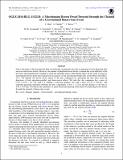Files in this item
OGLE-2014-BLG-1112LB : a microlensing brown dwarf detected through the channel of a gravitational binary-lens event
Item metadata
| dc.contributor.author | Han, C. | |
| dc.contributor.author | Udalski, A. | |
| dc.contributor.author | Bozza, V. | |
| dc.contributor.author | Szymański, M. K. | |
| dc.contributor.author | Soszyński, I. | |
| dc.contributor.author | Skowron, J. | |
| dc.contributor.author | Mróz, P. | |
| dc.contributor.author | Poleski, R. | |
| dc.contributor.author | Pietrukowicz, P. | |
| dc.contributor.author | Kozłowski, S. | |
| dc.contributor.author | Ulaczyk, K. | |
| dc.contributor.author | Wyrzykowski, Ł. | |
| dc.contributor.author | Novati, S. Calchi | |
| dc.contributor.author | D’Ago, G. | |
| dc.contributor.author | Dominik, M. | |
| dc.contributor.author | Hundertmark, M. | |
| dc.contributor.author | Jorgensen, U. G. | |
| dc.contributor.author | Scarpetta, G. | |
| dc.date.accessioned | 2017-08-08T12:30:10Z | |
| dc.date.available | 2017-08-08T12:30:10Z | |
| dc.date.issued | 2017-07-06 | |
| dc.identifier | 250686281 | |
| dc.identifier | add2c5eb-fc01-4fc8-a924-ae18f30221dd | |
| dc.identifier | 85025112198 | |
| dc.identifier | 000405010600010 | |
| dc.identifier.citation | Han , C , Udalski , A , Bozza , V , Szymański , M K , Soszyński , I , Skowron , J , Mróz , P , Poleski , R , Pietrukowicz , P , Kozłowski , S , Ulaczyk , K , Wyrzykowski , Ł , Novati , S C , D’Ago , G , Dominik , M , Hundertmark , M , Jorgensen , U G & Scarpetta , G 2017 , ' OGLE-2014-BLG-1112LB : a microlensing brown dwarf detected through the channel of a gravitational binary-lens event ' , Astrophysical Journal , vol. 843 , no. 2 , 87 . https://doi.org/10.3847/1538-4357/aa762f | en |
| dc.identifier.issn | 0004-637X | |
| dc.identifier.other | Bibtex: urn:e945cd06485366d1922d19b535208ad9 | |
| dc.identifier.other | ORCID: /0000-0002-3202-0343/work/75996745 | |
| dc.identifier.uri | https://hdl.handle.net/10023/11405 | |
| dc.description | Work by C. Han was supported by the grant 2017R1A4A1015178 of the National Research Foundation of Korea. The OGLE project has received funding from the National Science Centre, Poland, grant MAESTRO 2014/14/A/ST9/00121 to A. Udalski. | en |
| dc.description.abstract | Due to the nature of the gravitational field, microlensing, in principle, provides an important tool for detecting faint and even dark brown dwarfs. However, the number of identified brown dwarfs is limited due to the difficulty of the lens mass measurement that is needed to check the substellar nature of the lensing object. In this work, we report a microlensing brown dwarf discovered from an analysis of the gravitational binary-lens event OGLE-2014-BLG-1112. We identify the brown dwarf nature of the lens companion by measuring the lens mass from the detections of both microlens-parallax and finite-source effects. We find that the companion has a mass of (3.03 ± 0.78) × 10-2 M⊙ and it is orbiting a solar-type primary star with a mass of 1.07 ± 0.28 M⊙. The estimated projected separation between the lens components is 9.63 ± 1.33 au and the distance to the lens is 4.84 ± 0.67 kpc. We discuss the usefulness of space-based microlensing observations for detecting brown dwarfs through the channel of binary-lens events. | |
| dc.format.extent | 8 | |
| dc.format.extent | 1173006 | |
| dc.language.iso | eng | |
| dc.relation.ispartof | Astrophysical Journal | en |
| dc.subject | Binaries: general | en |
| dc.subject | Brown dwarfs | en |
| dc.subject | Gravitational lensing: micro | en |
| dc.subject | QB Astronomy | en |
| dc.subject | QC Physics | en |
| dc.subject | NDAS | en |
| dc.subject.lcc | QB | en |
| dc.subject.lcc | QC | en |
| dc.title | OGLE-2014-BLG-1112LB : a microlensing brown dwarf detected through the channel of a gravitational binary-lens event | en |
| dc.type | Journal article | en |
| dc.contributor.institution | University of St Andrews. School of Physics and Astronomy | en |
| dc.contributor.institution | University of St Andrews. St Andrews Centre for Exoplanet Science | en |
| dc.identifier.doi | 10.3847/1538-4357/aa762f | |
| dc.description.status | Peer reviewed | en |
This item appears in the following Collection(s)
Items in the St Andrews Research Repository are protected by copyright, with all rights reserved, unless otherwise indicated.

